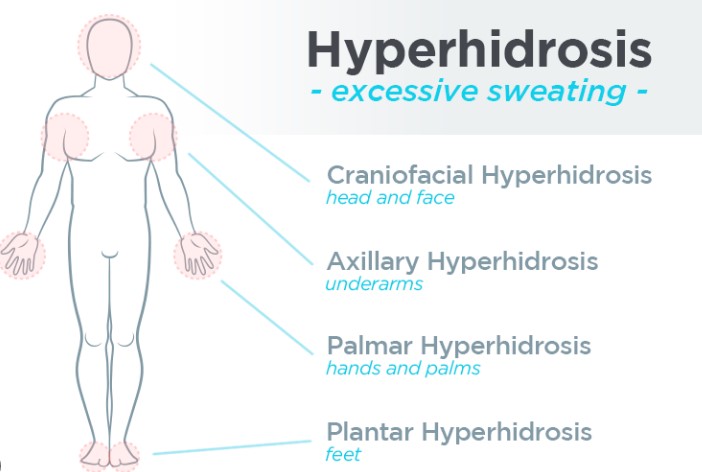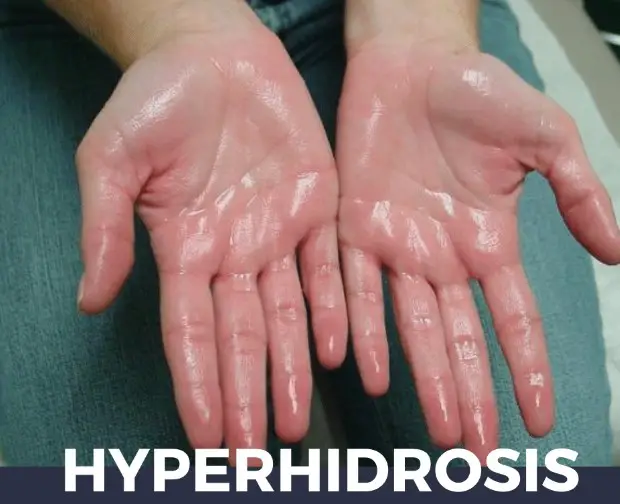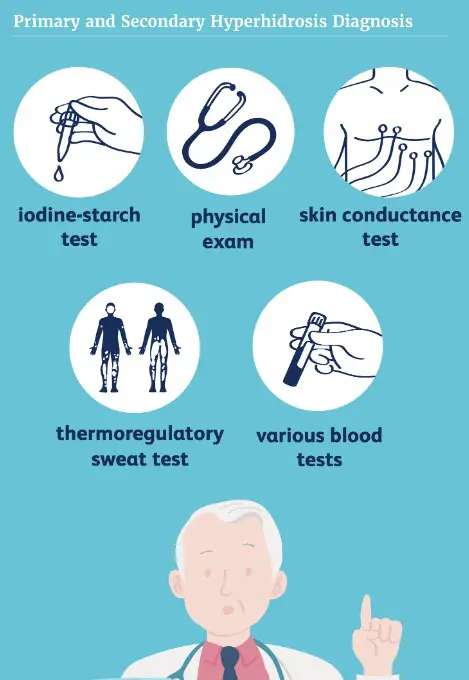Sweating is a natural bodily process, but for some people it can be a source of embarrassment and discomfort. Diaphoresis and hyperhidrosis are two conditions related to excessive sweating, but there are distinct differences between the two. In this blog post, we’ll explore the differences between diaphoresis and hyperhidrosis, including the causes, symptoms, and treatments for each.
In this blog post, we’ll explore the differences between diaphoresis and hyperhidrosis, including the causes, symptoms, and treatments for each.
Causes of hyperhidrosis

Hyperhidrosis is a condition that causes excessive sweating, often in areas such as the hands, feet, underarms, and face. Diaphoresis, on the other hand, is a term used to describe any excessive sweating, regardless of cause.
Hyperhidrosis can be caused by a variety of underlying conditions such as menopause, thyroid problems, or even anxiety. Treatment for hyperhidrosis usually involves topical antiperspirants or oral medications, while diaphoresis is usually treated with lifestyle changes such as avoiding certain foods or activities.
Symptoms of hyperhidrosis

Diaphoresis and hyperhidrosis are two conditions that can cause excessive sweating. Despite the similarities, they are two distinct conditions. Diaphoresis is a symptom of an underlying medical condition, while hyperhidrosis is a medical condition that causes excessive sweating without any other underlying medical cause.
Hyperhidrosis can be primary, meaning it is not caused by any other underlying condition, or secondary, meaning it is caused by an underlying medical condition. Diaphoresis, on the other hand, is always secondary and caused by an underlying medical condition.
Additionally, diaphoresis typically causes sweating over the entire body, while hyperhidrosis is more localized to certain areas, such as the hands, feet, and armpits.
Diagnosis and treatment of hyperhidrosis

Diaphoresis and hyperhidrosis are both conditions involving excessive sweating, but they are not the same condition. Diaphoresis is the medical term for profuse sweating, and it can be caused by a variety of medical conditions, such as fever or anxiety. Hyperhidrosis, on the other hand, is an excessive sweating condition that is not caused by a medical condition, but instead is caused by an overactive sympathetic nervous system.
Hyperhidrosis usually affects the armpits, palms, feet, and face and can cause significant embarrassment and discomfort. Treatment for hyperhidrosis can range from topical antiperspirants to Botox injections to surgery.
However, it is important to seek an expert opinion and get a proper diagnosis to determine the best treatment option for your condition.
How is diaphoresis different from hyperhidrosis
Diaphoresis and hyperhidrosis are both terms used to refer to excessive sweating, but there is a key difference between them. Diaphoresis is a term used to describe any kind of profuse sweating, while hyperhidrosis specifically refers to a medical condition in which a person sweats more than is necessary for normal thermoregulation. In other words, diaphoresis is a more general term that refers to any kind of excessive sweating, while hyperhidrosis is a medical condition characterized by excessive sweating.
In other words, diaphoresis is a more general term that refers to any kind of excessive sweating, while hyperhidrosis is a medical condition characterized by excessive sweating.
Prevention and management of hyperhidrosis
Hyperhidrosis and diaphoresis are two terms used in the medical field to describe excessive sweating. While both involve an increase in sweat production, there are key differences between the two. Hyperhidrosis is the medical term for excessive sweating, usually localized to certain areas of the body, such as the armpits, hands, or feet.
This type of sweating is usually unrelated to environmental factors such as temperature or activity level, and is most often caused by an overactive sympathetic nervous system. Diaphoresis, on the other hand, is the medical term for profuse sweating caused by an increase in body temperature, usually due to an illness or fever.
Unlike hyperhidrosis, diaphoresis is not localized to certain areas of the body, but is instead widespread. Treatment for both conditions includes medications, antiperspirants, iontophoresis, and surgical procedures, although the best approach depends on the individual and the underlying cause of the sweating.
Bottom Line
The main difference between diaphoresis and hyperhidrosis is that diaphoresis is a normal body response to increased physical activity, stress, illness, or environmental conditions, while hyperhidrosis is an excessive amount of sweating that is not related to any of these conditions and occurs without any known cause. Both diaphoresis and hyperhidrosis can be uncomfortable, but hyperhidrosis typically requires medical attention in order to find a solution to the excessive sweating.

